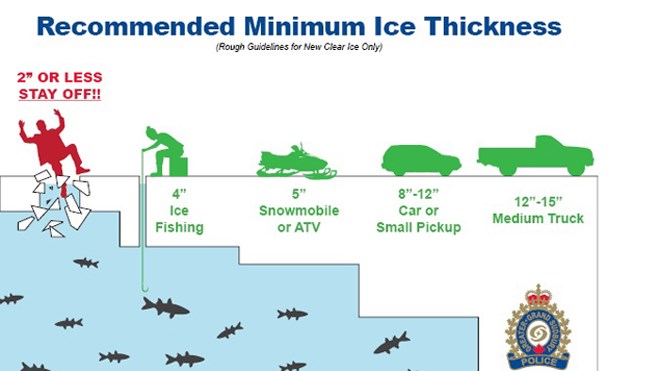With the increased warm weather, is it highly recommended to avoid all waterways.
Other than the temperature, there are a number of factors that have to be considered when trying to determine if the ice you are going out on is safe. Some of these factors include: the depth and the current of the water in the lake or river as well as the amount of snow which may insulate / affect the quality of the ice.
Testing the thickness of the ice at different locations and speaking with local residents who are very familiar with a particular waterway are strongly recommended.
The following tips may assist in preventing tragedy:
- It is critical to evaluate the ice quality and type before travelling
- Sufficient clear hard new ice is the only kind of ice recommended for travel
Avoid:
- Slushy ice
- Ice on/near moving water
- Ice that has thawed and refrozen
- Layered or ‘rotten’ ice caused by sudden temperature changes
Other risk factors that weaken ice are:
- Snow on ice that acts as a blanket to prevent hardening
- Pressure ridges due to wind, current or ice pressure



